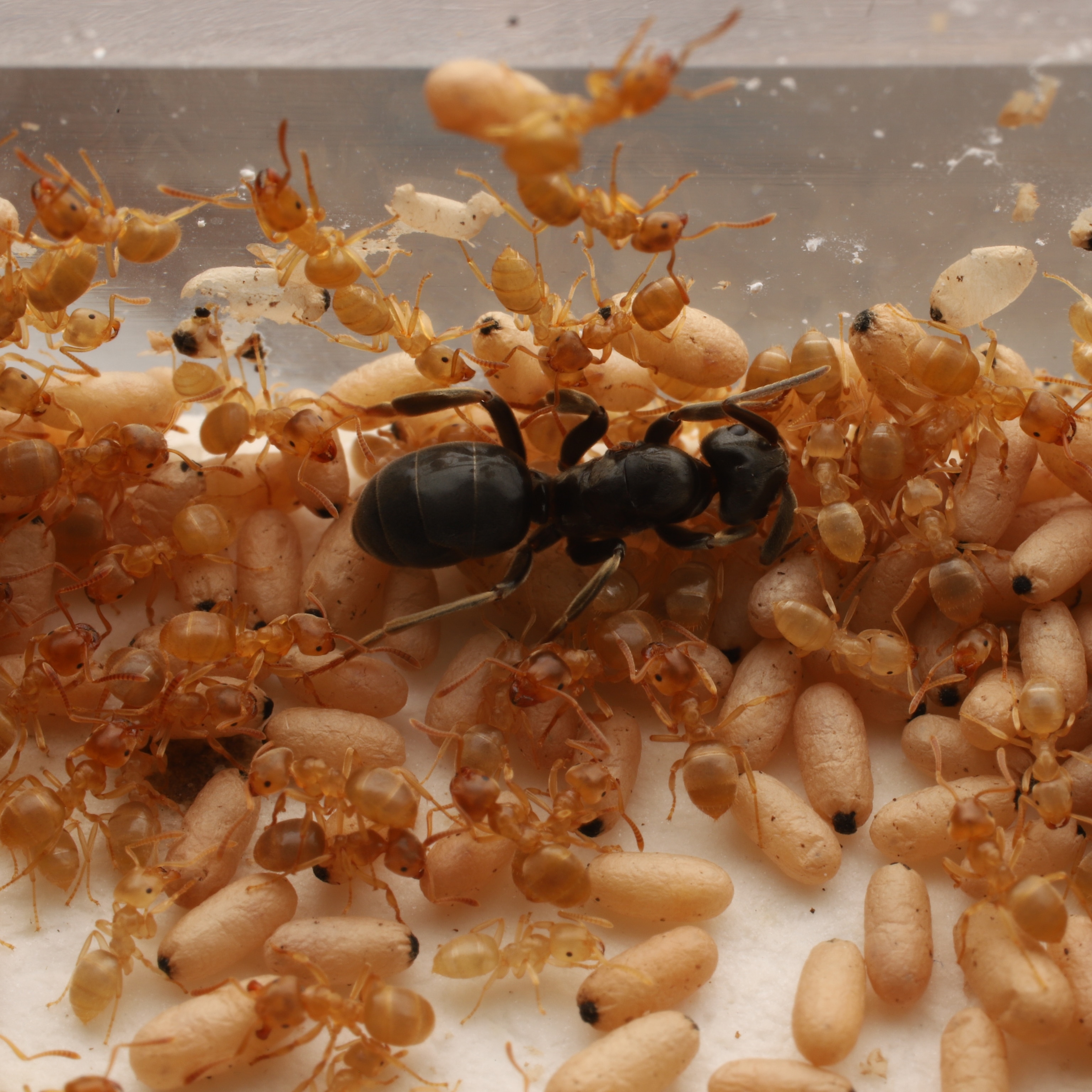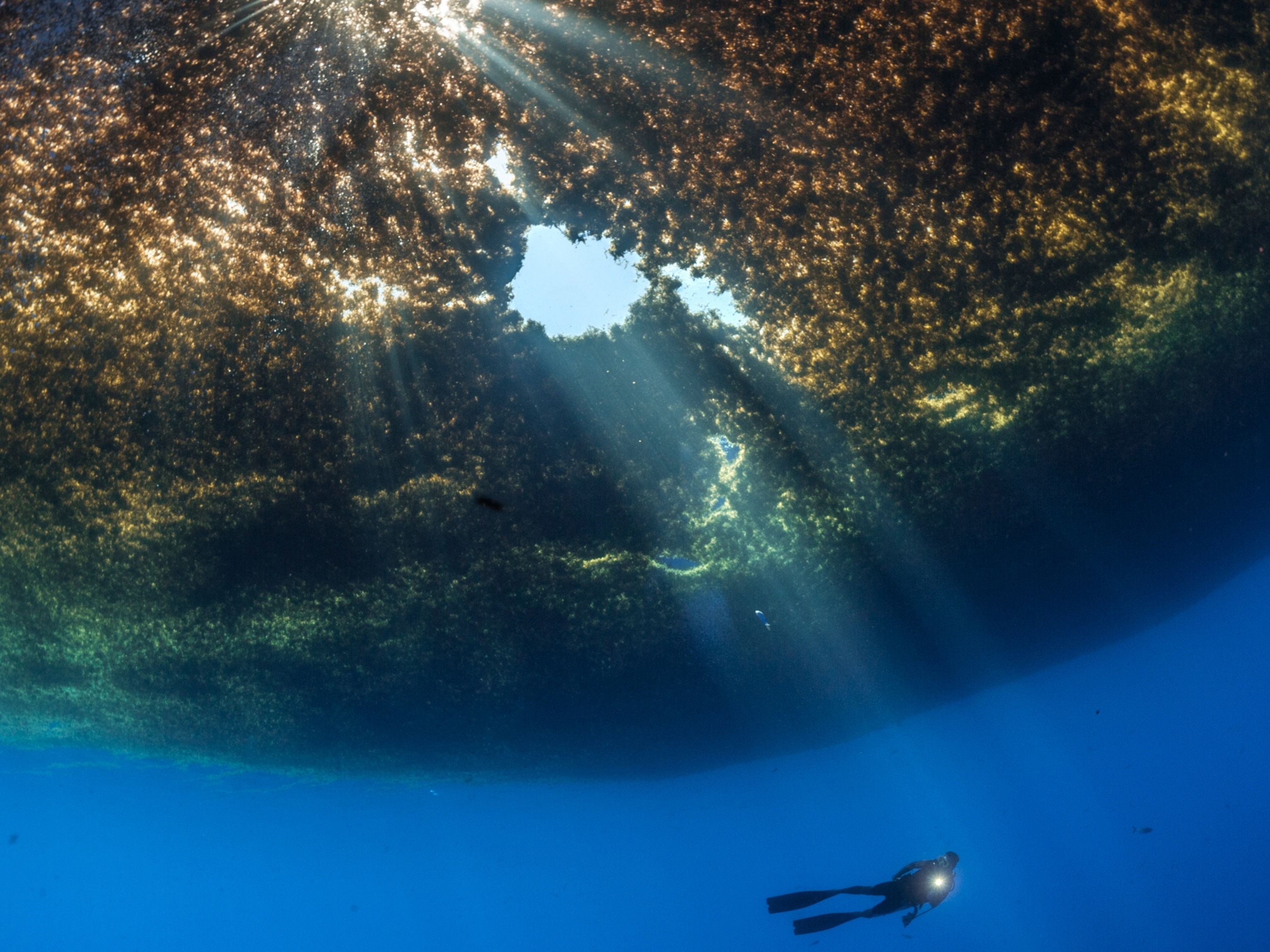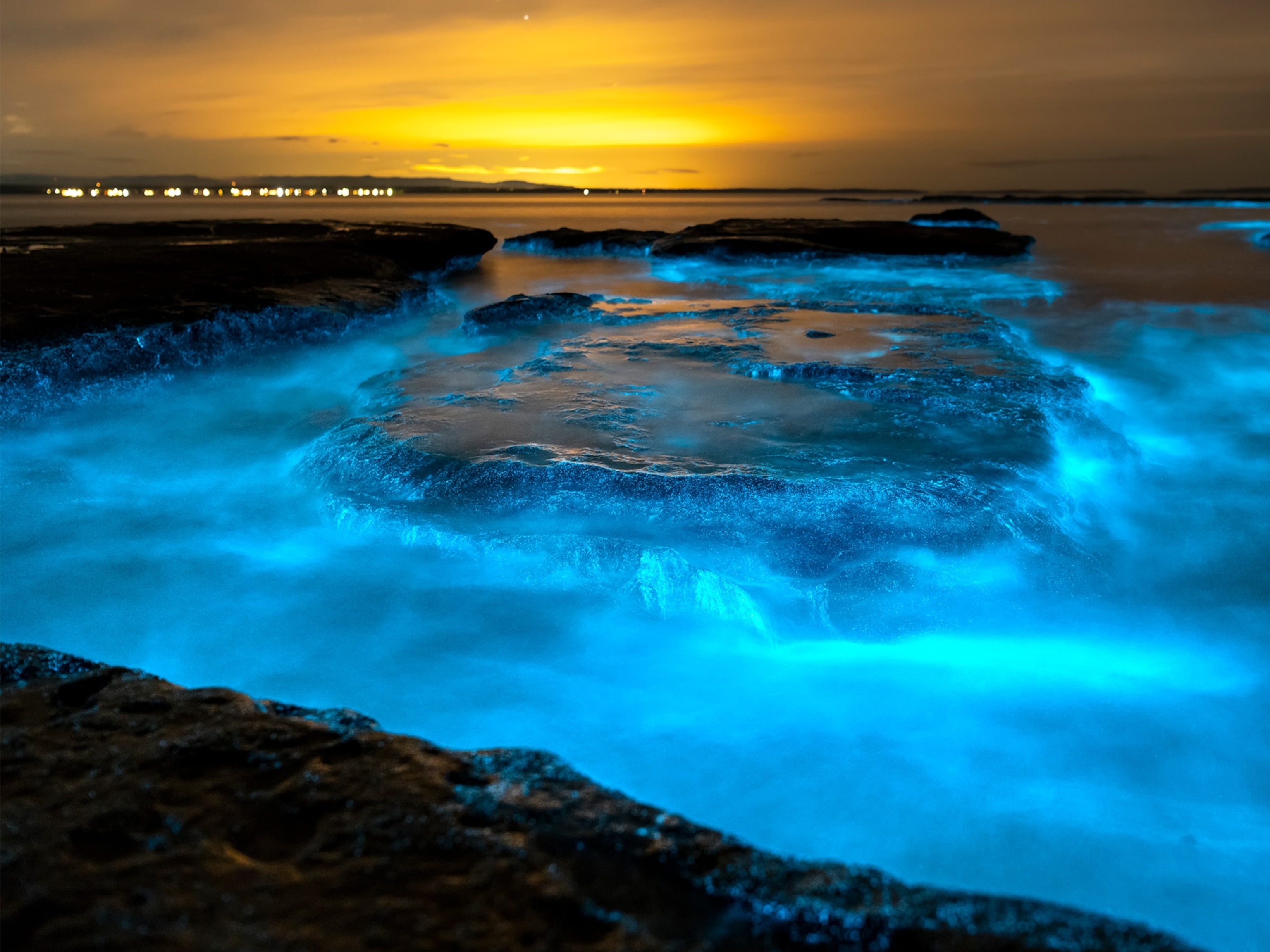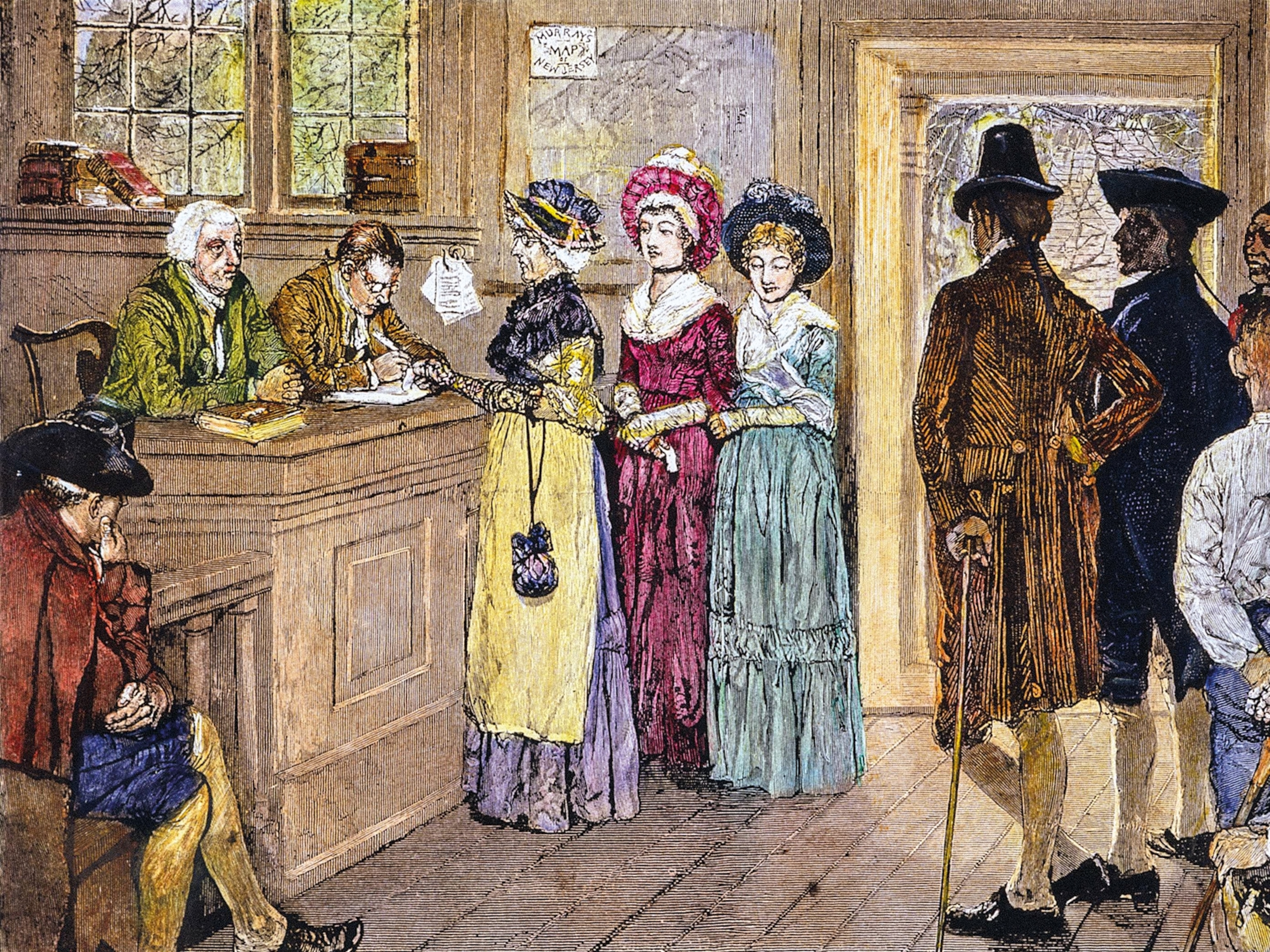
Here’s why scientists are studying Maine’s coastline
Acadia National Park’s vibrant intertidal zone inspired a pioneering, 19th-century female naturalist’s research. Its organisms may be under threat.
“Veritable gardens of the sea.” That’s how naturalist Augusta Foote Arnold described the tide pools of Maine’s Mount Desert Island.
These shallow pools of seawater left on the beach after the tide has receded are homes to starfish, mussels, periwinkles, barnacles, sea urchins, and crabs—a panoply of creatures tucked into their own microcosms until the tide comes in again.
“The seashore, with its stretches of sandy beach and rocks seems, at first sight, nothing but a barren and uninteresting waste, merely the natural barrier of the ocean,” Arnold writes. “But to the observant eye these apparently desolate reaches are not only teeming with life; they are also replete with suggestions of the past. They are the pages of a history full of fascination for one who has learned to read it.”
.jpg)
You’ve probably never heard of Arnold, but the 19th-century scientist changed the way we see the seashore. While she wasn’t formally trained, she was a member of the American Association for the Advancement of Science, along with her mother, Eunice Newton Foote, whose experiments foreshadowed the discovery of Earth’s greenhouse effect.
In 1901, three years before she died, Arnold published The Sea-Beach at Ebb-Tide: A Guide to the Study of the Seaweeds and the Lower Animal Life Found Between the Tide Marks, the first guide to focus on the North American intertidal zone.
“Unlike previous publications, which appeared as articles in scientific journals and technical reports, Sea-Beach was richly illustrated and written for a wide audience,” writes Catherine Schmitt, a science communication specialist at the Schoodic Institute, a research partner of Acadia National Park. Schmitt says that Arnold’s 600-page book was a comprehensive, scientifically accurate field guide to marine life that later inspired dozens of contemporary scientists—many of them women—studying the intertidal zone around Acadia.
(Meet the forgotten fossil hunter who transformed Britain’s Jurassic Coast.)
Last summer, 85 of Arnold’s observations of Acadia were included in Schoodic’s Intertidal Synthesis Project, a data collection of every documented observation of Acadia’s intertidal zone from Arnold’s book in 1901 to more recent findings in 2018. Scientists use the study to follow how the shore has changed and how it responds over time as the waters warm.
Visitors who want to follow in Arnold’s footsteps can wade the tide pools and participate in various volunteer scientist programs, contributing to Schoodic’s research on the region’s flora and fauna. By collecting vital data, volunteers help scientists learn about the current state of the intertidal zone and how they can preserve it for future generations.
Is harvesting seaweed sustainable?
More than a century after Arnold’s pioneering research, Acadia’s intertidal zone may be in danger. Organisms in this ecosystem are dependent on rockweed, which provides a habitat for invertebrates that live under its protective blanket at low tide. Due to climate change and potential overharvesting, Hannah Webber, marine ecology director at the Schoodic Institute, is studying the current state of rockweed along the Maine coast.
Rockweed, also known as Ascophyllum nodosum, is one of the foundational species of Maine’s intertidal areas and is harvested commercially for fertilizer, soil conditioners, animal feed, and other products.
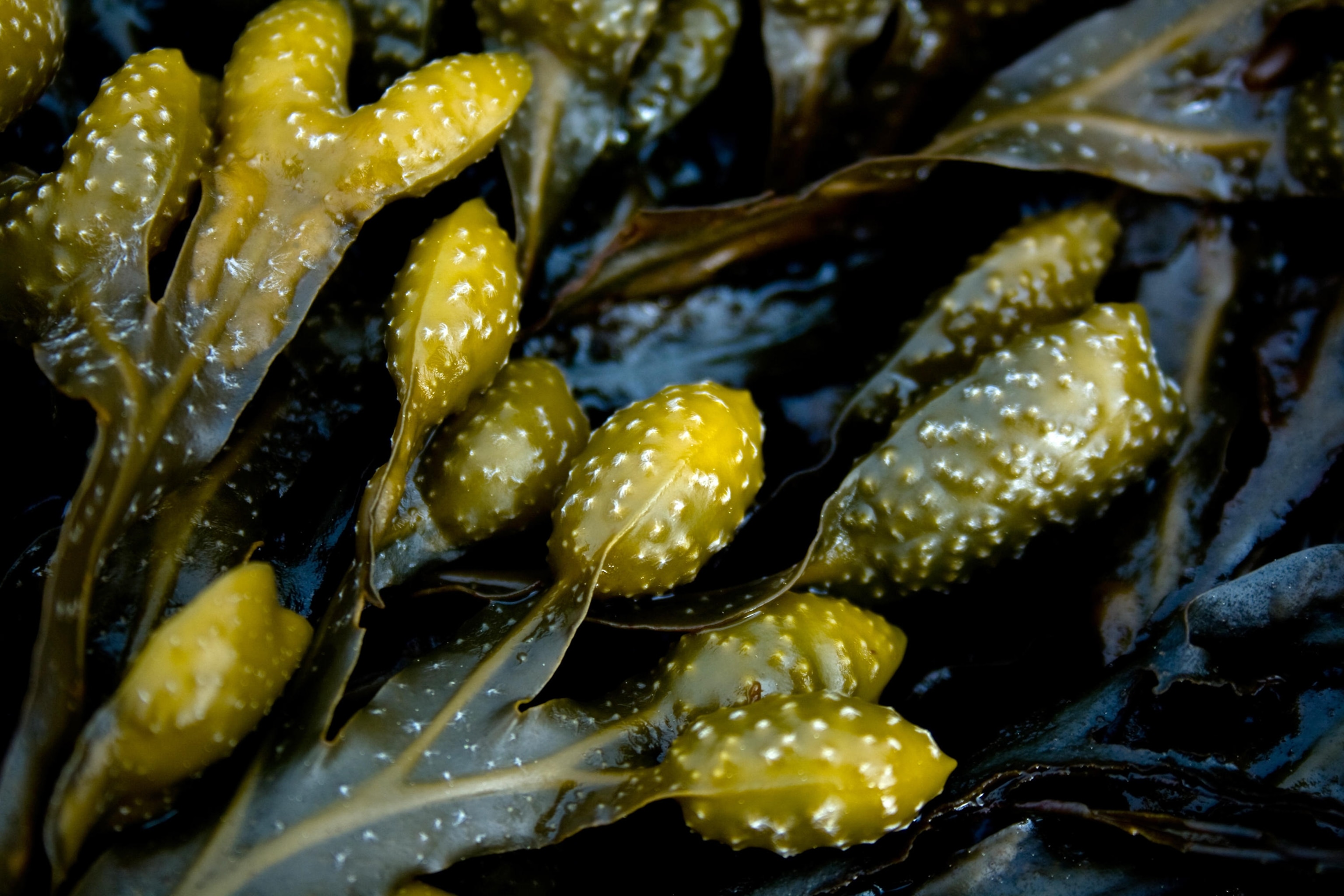
“Rockweed is incredibly abundant along the whole intertidal, but in the state of Maine, we have absolutely no idea how much we have,” says Webber. Although the harvesting of rockweed is not allowed within Acadia National Park, Webber’s efforts to map the species extend to other regions in Maine. “We need to know how much [rockweed] is there to know how much could be sustainably harvested.”
(Can California’s critical kelp forests be saved from a warming world?)
She explains that when rockweed—an alga, not a plant—is harvested from the water, sixteen inches are left behind, and it can regrow within two to five years. Its regrowth is bushier than the unharvested rockweed. Scientists want to know how much carbon is typically stored in rockweed and how harvested rockweed compares to its non-harvested counterpart.
This research is especially important as seaweed harvesting increases. Maine’s $20-million seaweed industry—with rockweed making up most of the harvest—reached a record high this year. More than 15 million pounds were harvested, nearly triple the amount culled in 2001.
Arnold wrote in Sea-Beach that barnacles and rockweeds were the first things one would notice along Maine’s rocky coast. “They are conspicuous in their profusion….yet both are likely to be passed by with indifference because of their plentifulness,” she says.
Precisely because it’s so plentiful, it provides a valuable habitat for the invertebrates that Arnold recorded. When the tide retreats, Webber says rockweed creates a massive blanket across the rocks and “modulates the environment where the intertidal exists.” As a result, crabs, periwinkles, and mussels stay cool and moist under the rockweed, even when the sun is high and hot.
Scientists like Webber are studying the work rockweed does to insulate rocks from heat. One possible risk is that harvesting rockweed could adversely affect the algae’s capacity to sustain these tidal ecosystems.
Become a naturalist
There is much to explore along Acadia’s coastline—the first national park east of the Mississippi River. Most of the park is on Mount Desert Island, a patchwork of parkland, private property, and seaside villages. During autumn colorful foliage transforms the landscape for a few brief but brilliant weeks. Early risers strive to be up in time to catch America’s first sunrise on top of Cadillac Mountain between October and March when the sun climbs above the Atlantic Ocean’s horizon, which cast the park in vivid oranges, reds, pinks.
Venture into Bar Harbor, an eclectic seaside town, packed with lobster shacks, vintage shops, and stellar museums. Don’t miss the Abbe Museum, the only Smithsonian Affiliate in Maine, dedicated to the Wabanaki Alliance of Native American tribes along the Maine coast.
During the summer, a passenger ferry runs between Bar Harbor and Winter Harbor and the park’s Schoodic Peninsula, the only part of Acadia National Park found on the mainland and the base of the Schoodic Institute.
Schoodic offers a range of citizen science programs throughout the year, from collecting data on the park’s flora and fauna during designated Bio Blitzes, which uses the iNaturalist app, a joint initiative of the California Academy of Sciences and the National Geographic Society, to the ongoing Project ASCO—Assessing Seaweed via Community Observations. Volunteers are invited to sign up for training sessions that will prepare them to help assess how much rockweed grows along the coast of Maine during the 2022 season.
Travelers can make their own tide pool observations at one of Acadia’s tidepooling locations—Ship Harbor, Wonderland, Bar Island, or the Schoodic Peninsula—which are best seen 1.5 hours before and after low tide.
“Every tide brings different species of the ocean fauna to temporary imprisonment in this enclosure,” Arnold wrote about Acadia’s tide pools, “so that it is difficult to say what one may not chance to find in this interesting place.”
Rachel May is the author of several works including her book, An American Quilt. She’s currently at work on a book about Augusta Foote Arnold.
Editor’s note: This story was updated on Oct 27, 2021 to reflect new information.

